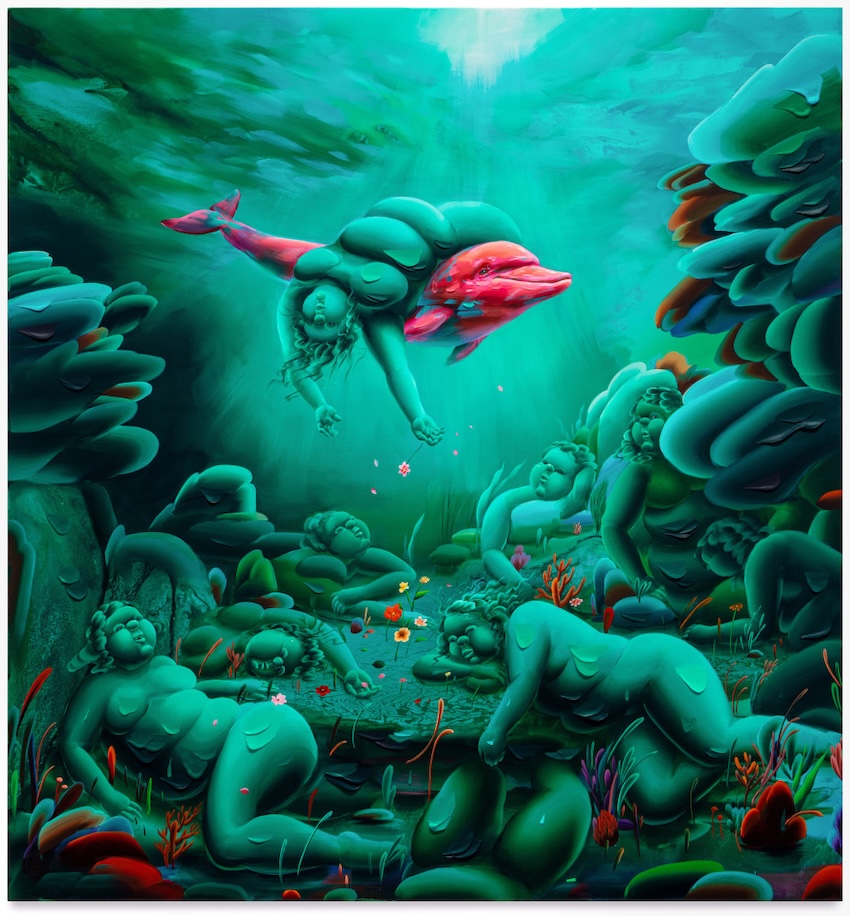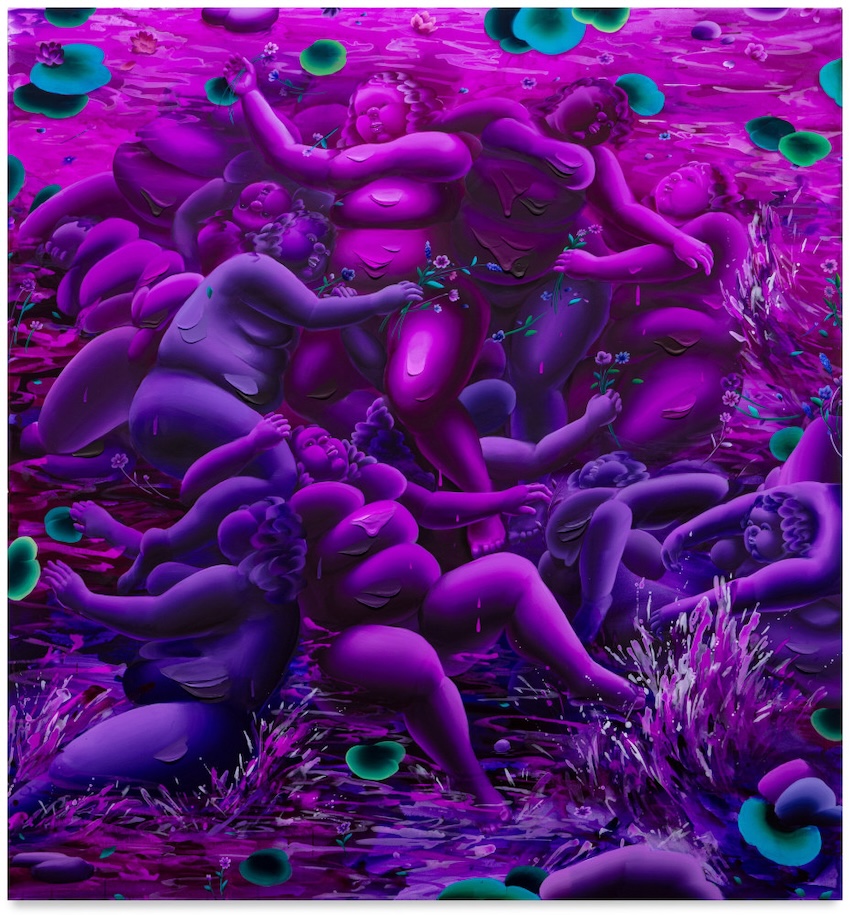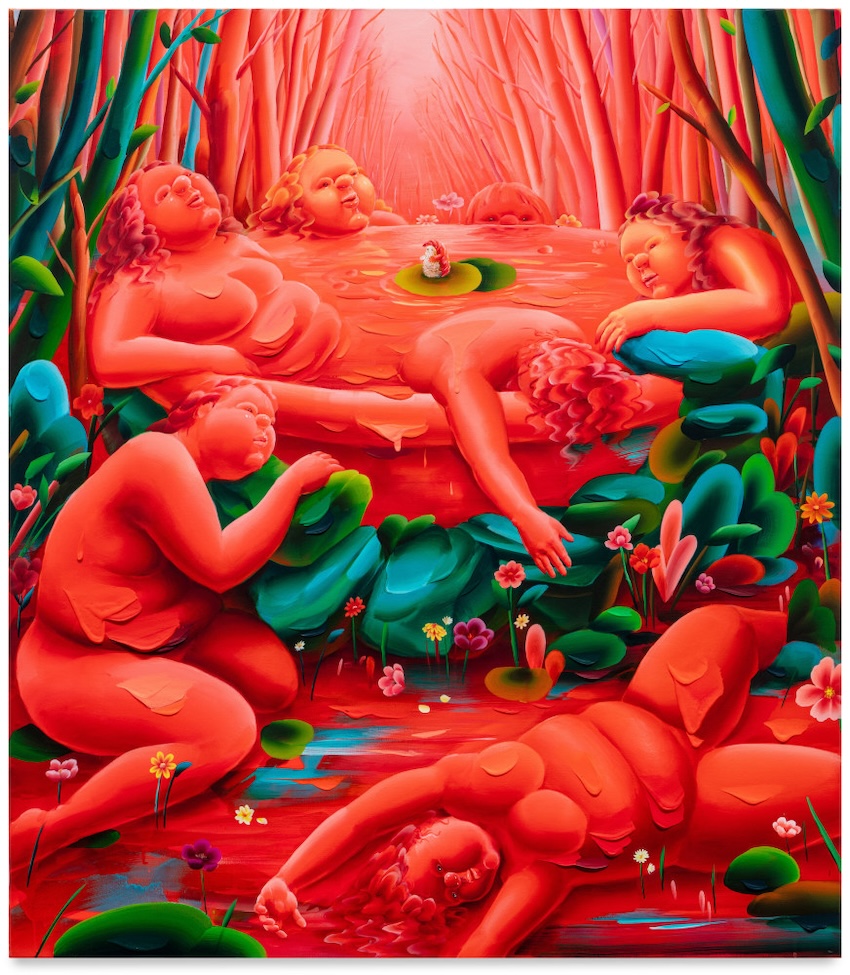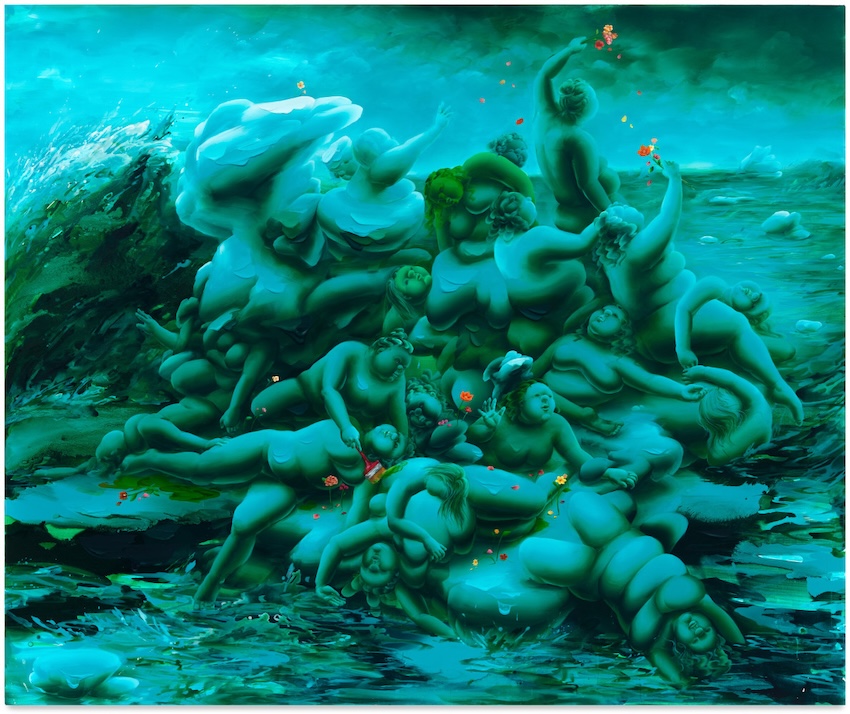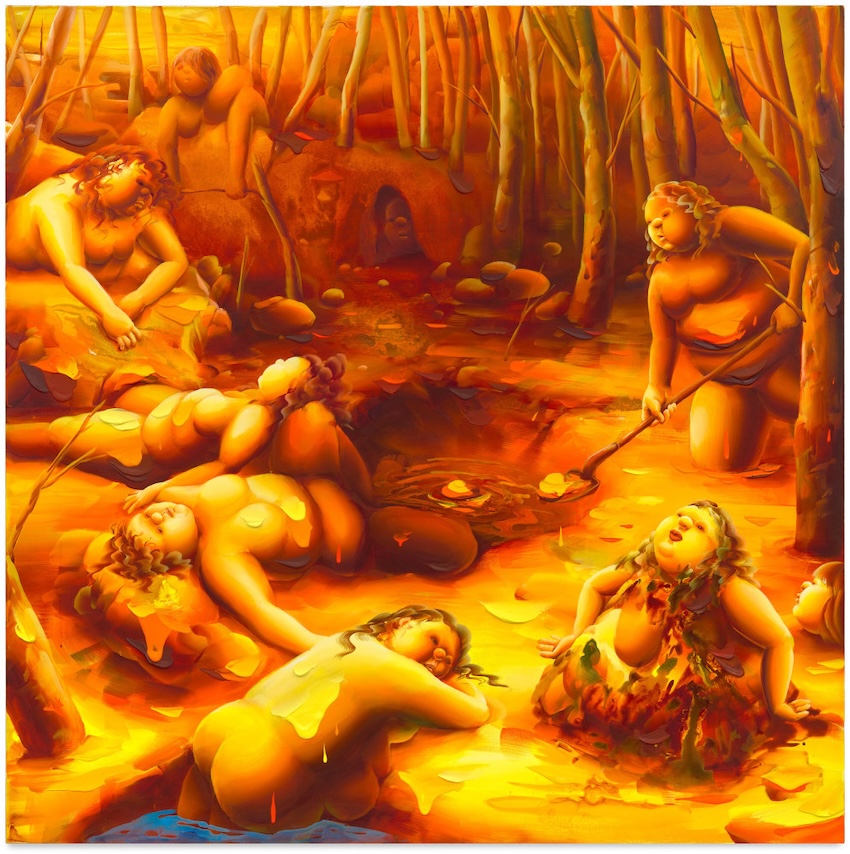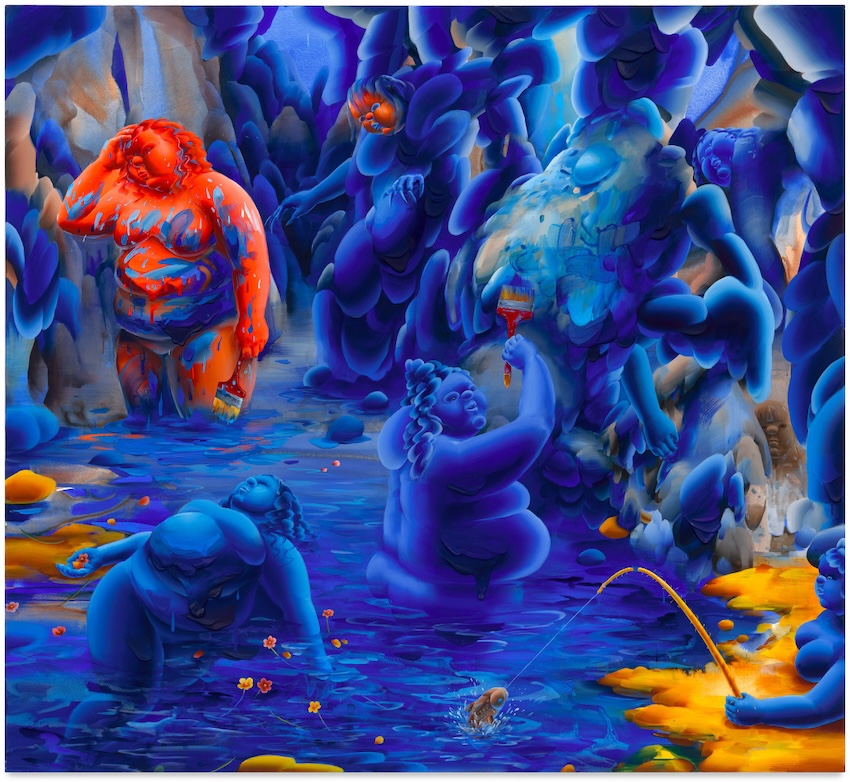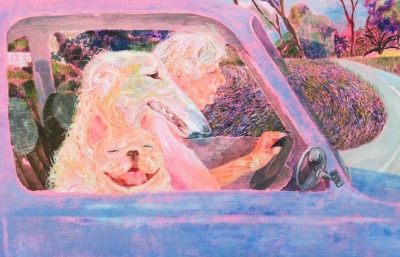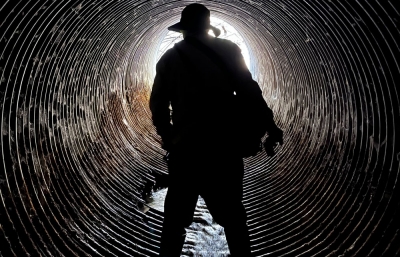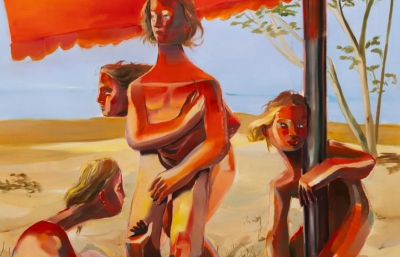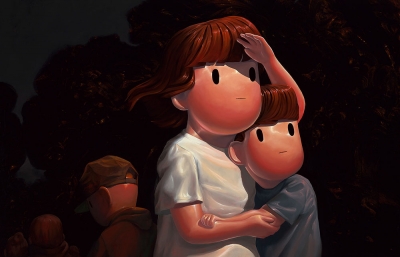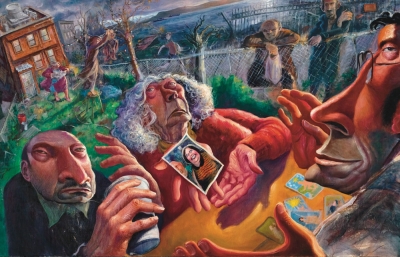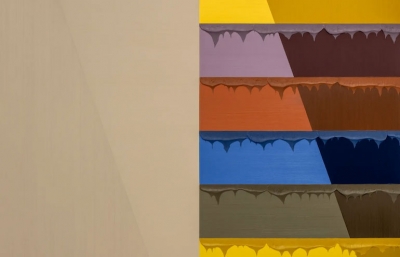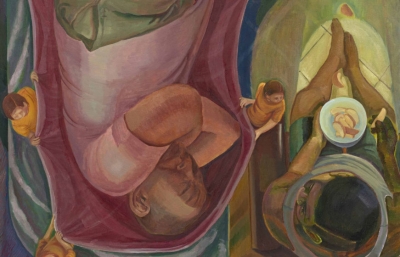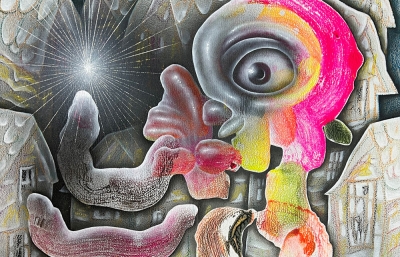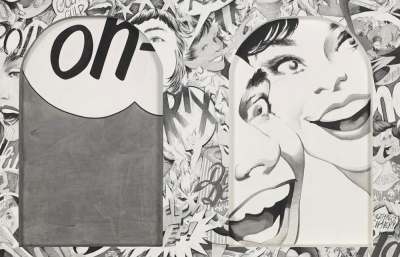Harper’s is pleased to announce Quieter and Colder, New York-based artist Hyegyeong Choi’s second solo exhibition with the gallery. Choi, who was born and raised in Korea, traditionally paints shapely women who indulge in surreal environments. These striking figures subvert stifling conceptions of beauty as they rest their nude bodies amidst lush terrain and electric pools of water. But for Choi, water is not always a site of respite: the critical source of life has been a symbol of emotional turmoil for the artist who has survived the troubles of self-destruction. Across Quieter and Colder, Choi reckons with the plight of this psychological trauma across immersive figurative paintings. In these new works, intrepid protagonists overcome treacherous landscapes, embodying Choi’s odyssey through the afflictions of public perception and the tribulations of mental health.
The artist’s intimate relationship to mourning manifests in melancholic temporalities among the works that comprise Quieter and Colder. In the painting Hiding in My Studio, large women shake off profound blues as if coming alive again after an arduous slumber. They emerge from the depths of a pond surrounded by an esoteric cave. Exquisite flowers float along this introspective oasis, gesturing towards the ephemeral nature of life and the cycles of death and revival that provoke existence. As the women slowly awaken their senses to the enigmatic landscape, they bathe, catch fish, and paint with unbridled curiosity. Color plays a liberatory role here: at times, beaming orange light slices through the somber blue pigment, directing hope in this scene of rebirth. But as the eye wanders towards the background of the visual plane, we are swiftly displaced from the illusion of uninhibited freedom: a bevy of unassuming onlookers, camouflaging among the rocky walls of the catacomb, elicit the voyeuristic gaze of unwanted critique.
We witness the haunts of mental unease and corporeal restraint again in Excavation. Here, women sunbathe as they lie against scorched earth. Three figures bare their limbs to the sun, soaking in the blazing heat of the sizzling day. The bodies, much like the landscape, are shaded in warm tones: rich yellow and deep auburn conjure the dizzying stupor of an afternoon at the beach. But in this jarring scene, there is no sea to escape to. These women face undetermined fates instead as they sink into massive holes in the earth, threatening to destabilize their day of rest.
Repeatedly, throughout Quieter and Colder, Choi portrays the unsettling nature of being born to a human body. For the artist, living in a human body is a test of endurance—a life subject to ceaseless observation and judgment. Choi visualizes this existential strife with gripping symbolism in Uncharted Water. The towering work, inspired by the nineteenth-century romantic painting The Raft of the Medusa by Théodore Géricault, shows a crew of women clamoring for safety as they converge with an iceberg. Some reach for the sky, throwing glimmering flower petals toward the path of futurity. Others lunge into doomed fates as they jump away from their companions and into the icy waters beneath them. The apocalyptic scene staged in solemn teal and turquoise, demonstrates the emotional friction that plagues human existence. Ultimately, the protagonists of Quieter and Colder reckon with mortality itself. Choi, with her impassioned approach to figuration, captures the perplexing dichotomy between the human will to live and the will to die.



